Sep 30 2010
Buttery Butternut & Chardonnay
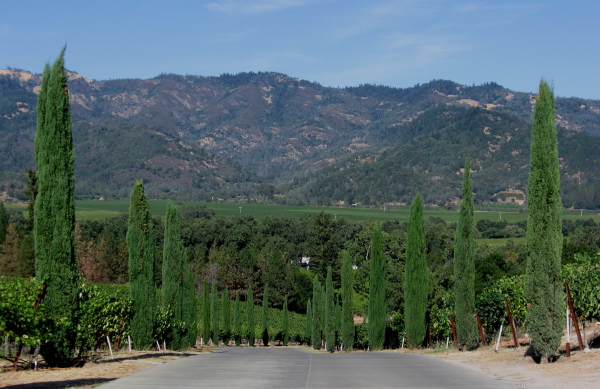
This past week Mother Nature gripped California in an angry heat wave as if to remind every “Doubting Thomas” statewide that wrathful heat was possible despite prior “cold” summer conditions. Despite the climatic vengeance that ensued during the first official week of autumn, temperatures are now beginning to stabilize.
While oppressive heat may be uncomfortable and unwelcome at any time of the year, in the garden there is a vegetable that can benefit from such hot and dry conditions: the butternut squash. I am amused when friends gawk in amazement that I will grow butternut squash and often they assume that I must have some giant expanse of land to grow these squash. As often indicated in my articles, most produce that I use each week is grown in my own organic garden. Before imaginations run wild, I do not live on an expansive farm but have a simple backyard and outdoor space much like many. Much of my gardening is done from seed and butternut squash is no exception. In fact for those living in California, butternut squash is quite easy to grow and prolific (as my neighbors last year witnessed as brown bags of squash were dropped off on front porches).
Butternut squash enjoys heat and sun. It is such a low maintenance vegetable that it does not even require fancy soil compositions. To prove as an example, I cleared out a small area of an otherwise unused rock bed. Making two mounds of dirt with a dash of peat moss and some organic fertilizer, seeds were tucked into the ground. Soon the plants sprouted and were off and running.

As the two plants continued to grow, they spread across the rocks and brightly colored squash blossoms decorated the green leaves until tucked beneath appeared young squash.
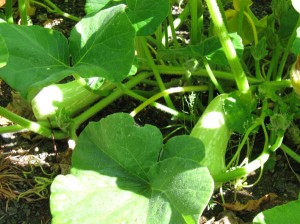
Within a couple of months, these green squash turned that soft pale hue characteristic of ripe butternut squash and harvesting began. How much harvesting? 67 butternut squash in total were picked last year alone. My entire block agreed happily that butternut squash was indeed prolific.
Clearly 67 butternut squash is too much for one person to consume and there is only so much freezer space that can be reasonably allotted for these gems. After donating some to a local food bank and gifting many to neighbors, the rest are used for freezing and in an abundance of fall recipes.
From a wine pairing perspective, butternut squash sidles up deliciously with Chardonnay. Chardonnay for me personally is a tough sell as there are many other white wines that I adore. The over-processed oak butterballs that have traditionally represented California Chardonnay never grace my table and frankly, never will manipulate the palate of any dining guest of mine. That being said, pairing Chardonnay with butternut squash can be tricky. My personal palate leans in the direction of the un-oaked or slightly oaked Chardonnays (and the latter can run quite expensive). This week, I pulled an uncharacteristic choice from collection as it hails from a larger, more commercial winery (as opposed to the typical smaller family-owned gems that I prefer to feature). Yet, the reasoning for featuring this wine is two-fold. The Chardonnay in question is pleasant and delightful on its own with its golden apple and nutty aromas, but it has a specific unique factor that my palate pulls from the wine: a macadamia nut finish. Secondly, the wine is far more affordable than some of its $50 and up counterparts. The Napa Valley Chardonnay from Castillo de Amoroso has a more casual appeal as a result and it fits well with the nature of this week’s menu:
1) Garden Mixed Lettuce Salad With Chardonnay Braised Figs, Gorgonzola and Champagne Pear Vinaigrette; and
2) Roasted Butternut Squash Lasagna.
Salad pairs perfectly with the light nature of most Napa Valley Chardonnay wines. Add some freshly picked figs which have been braised in white wine and the figs will pick up the delicious golden apple notes of this wine in particular. Dress the salad in champagne-pear vinaigrette and the side dish will have the proper acidity, sweetness and texture to accompany a good glass of Chardonnay.
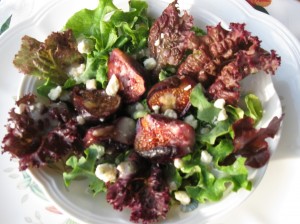
Creating small boats of Roasted Butternut Squash Lasagna is advised given the rich nature of my recipe. The theme of a “little goes a long way” when you realize that the sauce for this lasagna is none other than a Gorgonzola Cream Sauce boasting careful amounts of garden-plucked shallots, sage, cream, parmesan cheese and sliced gorgonzola.
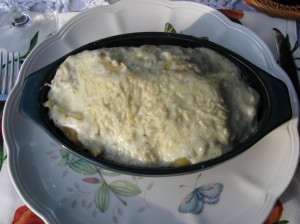
Roasted Butternut Squash is pureed to include slowly caramelized shallots, freshly picked thyme and sage from the garden, nutmeg and other seasonings. Layered with cooked lasagna noodles and Gorgonzola Cream Sauce, “heaven” begins to bake in your oven and notify your neighbors that something divine is about to hit the table.
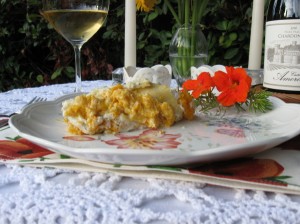
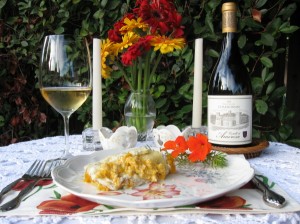
Soft, creamy and silky textures a slowly savored as gooey parmesan and gorgonzola cheese add salt and depth of flavors to the dish. Remembering to sip the Chardonnay, the golden apple notes embrace the flavor of the butternut squash as a refreshing slight citrus zest cuts through the gorgonzola. Of greater importance is the lovely macadamia nut finish found on Castillo de Amoroso’s Napa Valley Chardonnay: it serves as almost an additional ingredient to the dish itself and comfortably transitions the palate for the next bite of Butternut Squash Lasagna bliss.
While the winery Castillo de Amoroso has a greater commercialized feel than those that I typically visit, this wine in particular proves that unique qualities can be found in larger environments such as this. If careful enough attention is paid to what is being tasted, you will also recognize hidden jewels that uniquely pair with certain acts in your culinary repertoire.
*Look for The Casual Connoisseur fan page on Facebook for article postings, fun facts, quick weekend culinary creations and more. Cheers!
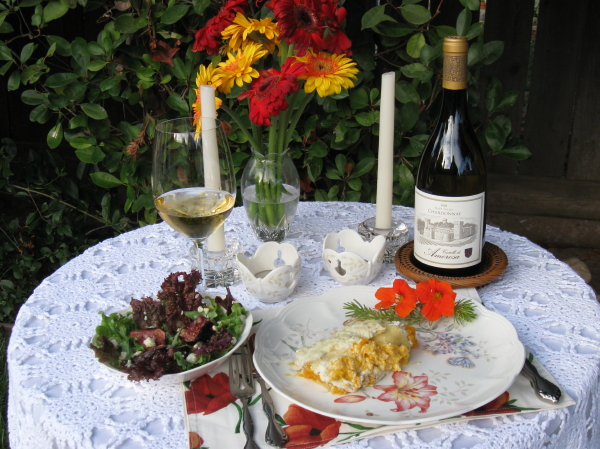
Comments Off on Buttery Butternut & Chardonnay